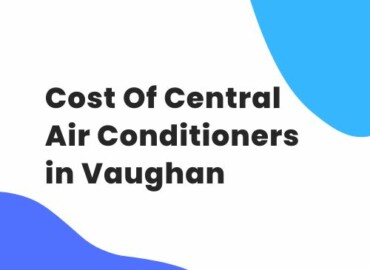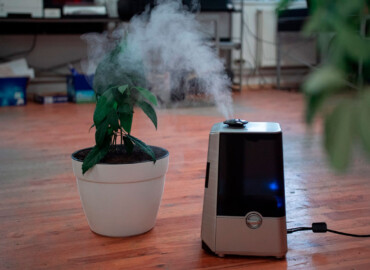How long does a furnace usually last?
It is not possible to give an exact answer to this question, as the life expectancy of a furnace depends on many factors that influence the life span of the furnace.
If the furnace is acting up, most of you will surely wonder how many years it typically lasts. Signs of impending failure and/or aging mean it’s time to give up, but wait, do you know why an old furnace should be replaced? On average, a furnace lasts two decades (15 to 20 years).
If periodic repairs are taken care of, and annual maintenance and frequent cleaning are carried out, this period can be even longer. However, it is extremely difficult to preserve the efficiency and lifespan of the furnace due to the unit clogging up and breakouts over time.
Once your furnace has completed its 15-year life, you should start considering a brand new model to be ready to replace. Even though a brand-new furnace is an expensive investment, it plays an important role in indoor comfort.
While we provide a rough idea of the furnace life span, we specifically brought some comprehensive knowledge on top of the same, furnace replacement symptoms, aspects affecting furnace life expectancy, and some tips to follow to delay the inevitable.
Scroll down the information below to determine how long a furnace lasts and when it should be replaced!
Furnace Life Expectancy (Approximate)
The lifespan of furnaces varies according to the size and model offered by the brands. There is debate among users that a furnace typically lasts 20 years. In extremely rare cases, furnace units have an average lifetime of 40 years.
With utmost care and maintenance, the average life expectancy of a furnace is about 15 to 30 years. As discussed earlier, furnace lifespan can vary, with gas furnaces lasting 15 to 20 years, heat pumps having an average life of 15 years, boilers lasting 15 to 30 years, and electric furnaces lasting 30 to 40 years.
As with any other home appliance, basic repairs and frequent check-ups are needed to ensure the furnace is working at its optimum levels. While many homeowners purchase an upgraded furnace before significant repairs are needed and if the warranty period expires, some are eager to go through various repairs before discarding the old unit.
If the time has come to replace your old furnace with a new one, look for a more efficient unit. Buying Energy Star-rated furnaces typically provides up to 15% more efficiency than an ordinary furnace, resulting in energy-cost savings in the long run.
Factors that influence the lifespan of your furnace
Several factors affect the furnace life shelf, including upkeep & maintenance, furnace size, installation, improper ventilation, and thermostat settings.
Over-sized or Under-sized furnace
An improper-sized furnace can be a red flag for your HVAC system. Depending on your building’s square foot, climate, and elements, you should find the right size for your property. An appropriately sized furnace can be last for years, while a too small or big won’t.
If the unit is larger than required, it will run for a shorter period of time as the property rapidly attains the thermostat’s temperature setting. This will result in more significant damage to the furnace components. On the other hand, a smaller furnace operates longer as it struggles to produce enough heat to reach the setting.
This longer running cycle further wears out or even damages the HVAC system.
Lack of regular upkeep and care
As with any appliance that requires proper care, your furnace should be given annual maintenance from a reputable HVAC technician. Regular checkups increase its lifespan. Make sure to provide regular maintenance tune-ups to your AC, along with maintenance during the period of use. If a furnace isn’t cleaned up, its components have a hard time doing their best work.
For example, dust and dirt build-up in a filter prevents smooth airflow. Due to dirt spreading in the fan, the unit becomes unbalanced and has an adverse effect on the fan motor. Dirt accumulation in the heat exchanger causes the unit to become less efficient when operating. Therefore, annual professional inspections, tune-ups, and frequent filter changes are required to ensure that the furnace will last year-round.
Improper Installation
Installation plays a vital role in increasing the lifetime of the furnace. Improper or incorrect installation can lead to a number of problems, such as poorly sized ductwork, unsuitable design, fuel line problems and improper condensation leaks.
This would cause further problems with the reliability and performance of the furnace. Incorrect installation of fuel lines and vents can have a negative impact on performance as well as shorten the lifetime of the furnace. So, you can hire our qualified HVAC technician at Smile HVAC for furnace installation.
Thermostat Settings
Setting the thermostat to too low or too high a temperature can pose a potential risk to your HVAC, resulting in either reduced lifespan or unwanted and costly repairs. Maintaining an average temperature within the property prevents stress on your furnace. If you set the temperature too high, the furnace may run too often.
Lowering the thermostat to eliminate the difference between inside and outside temperatures makes it easier to maintain and attain the thermostat’s settings for your unit. It is recommended to set the thermostat to 68 degrees F when you are at home, and if you are on the go, this temperature should be lower.
Lacks of ventilation
Furnaces typically find the attic, closet, or garage. Not getting proper airflow or having excessive moisture can cause damage to your heat exchanger, which will shorten the life of your unit. To avoid this, be sure to install your furnace in a location with proper ventilation and clearance.
When should I replace my furnace?
No matter how well-maintained or how sturdily built the furnace is, the end will come when it outlives its useful purpose. Below are some warning signs that you may need to buy a new furnace.
• Instant hikes in heating or power bills may be a warning sign that your unit is struggling to reach the desirable temperature as it did in the past.
• Sometimes, furnace components need to be replaced after ten years of use because they have a limited warranty. Instead of bearing more expense to run your old furnace, now is the time to replace your less energy-efficient unit with a new furnace.
• If your furnace repair becomes more expensive, it’s good to choose a new furnace.
• If you’re consistently juggling with your thermostat setting because it feels hot and cold, the furnace may fail. This means your furnace unit can no longer handle the heat load it used to.
• Collecting soot around the air ducts is a warning sign of the furnace producing carbon dioxide in excessive amounts.
• If two different temperatures (hot and cold) are reaching your property, it means the unit is not working properly. This may be a warning that the end of the furnace is near.
• Annoying noises like popping, banging, rattling, and squealing from your home furnace during the heating process may be a warning your furnace is soon to die.
• Over time, the chances are higher of developing a crack in the heat exchanger, leading to leakage of carbon monoxide. Call your HVAC technician to fix the problem as soon as possible, or replace it with a new one.
Tips to be adopted to increase the life of the furnace
Regular maintenance, service, and clean-ups are the best possible practice that helps in extending the lifespan of your furnace. Take a look at the tips below to prevent premature malfunctions and maintain the efficiency and performance of your unit.
• Furnace air filters should be cleaned and inspected regularly.
• Removal of dust, dirt, and other debris from motors, filters, and heat exchangers is crucial.
• When replacing, add a heat pump with your brand new unit instead of the AC, which will help reduce the furnace workload.
• Always hire a qualified HVAC technician, such as Smile HVAC, for furnace repair and cleaning, if required.
Bottom line
The average working period of a furnace can range from 15 to 20 years. Extend your furnace’s life by ensuring it is properly installed, sized, adjusting your thermostat and maintained.



